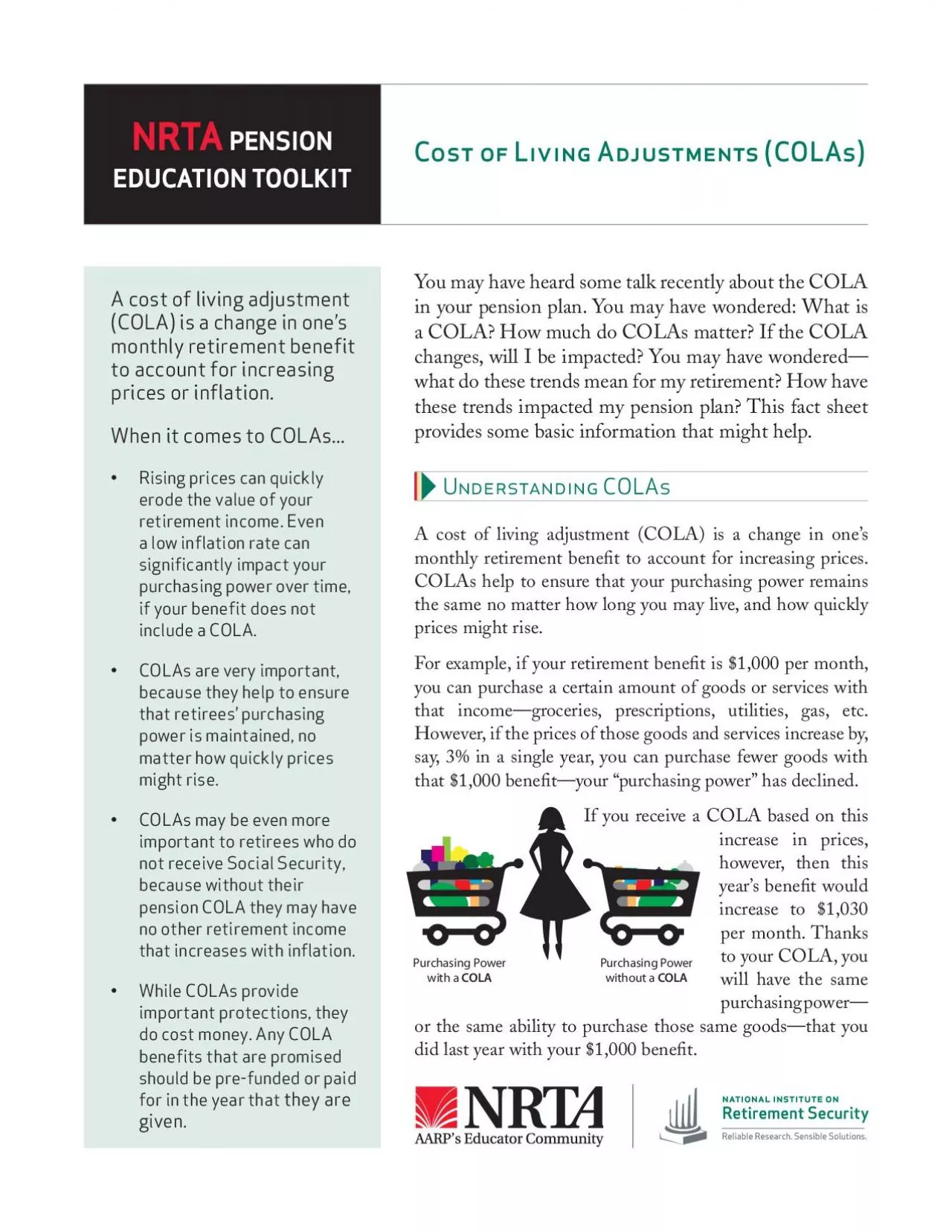PDF-You may have heard some talk recently about the COLA
Author : finley | Published Date : 2021-03-25
in your pension plan You may have wondered What is a COLA How much do COLAs matter If the COLA changes will I be impacted You may have wondered151 what do these
Presentation Embed Code
Download Presentation
Download Presentation The PPT/PDF document "You may have heard some talk recently ab..." is the property of its rightful owner. Permission is granted to download and print the materials on this website for personal, non-commercial use only, and to display it on your personal computer provided you do not modify the materials and that you retain all copyright notices contained in the materials. By downloading content from our website, you accept the terms of this agreement.
You may have heard some talk recently about the COLA: Transcript
Download Rules Of Document
"You may have heard some talk recently about the COLA"The content belongs to its owner. You may download and print it for personal use, without modification, and keep all copyright notices. By downloading, you agree to these terms.
Related Documents














